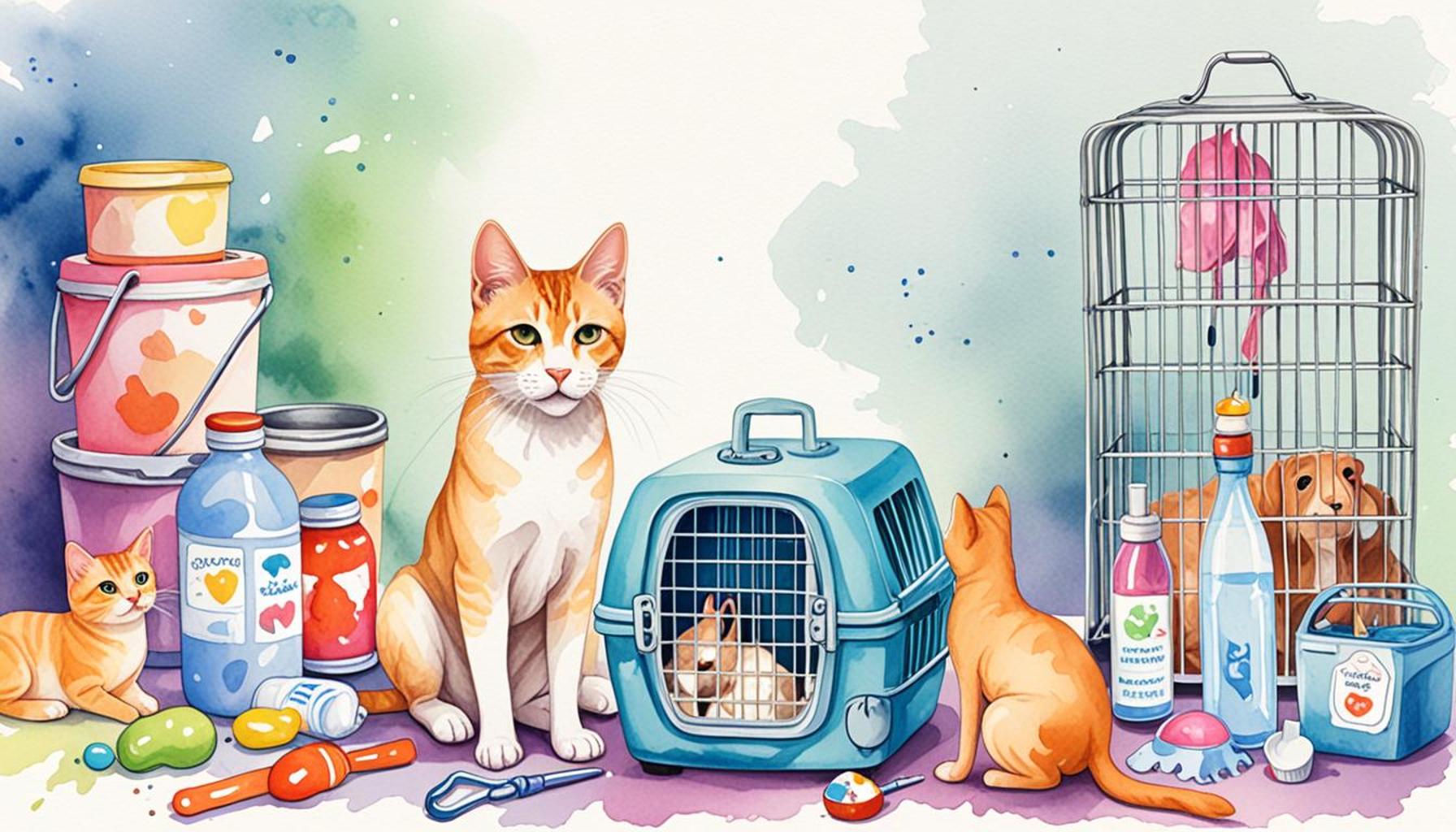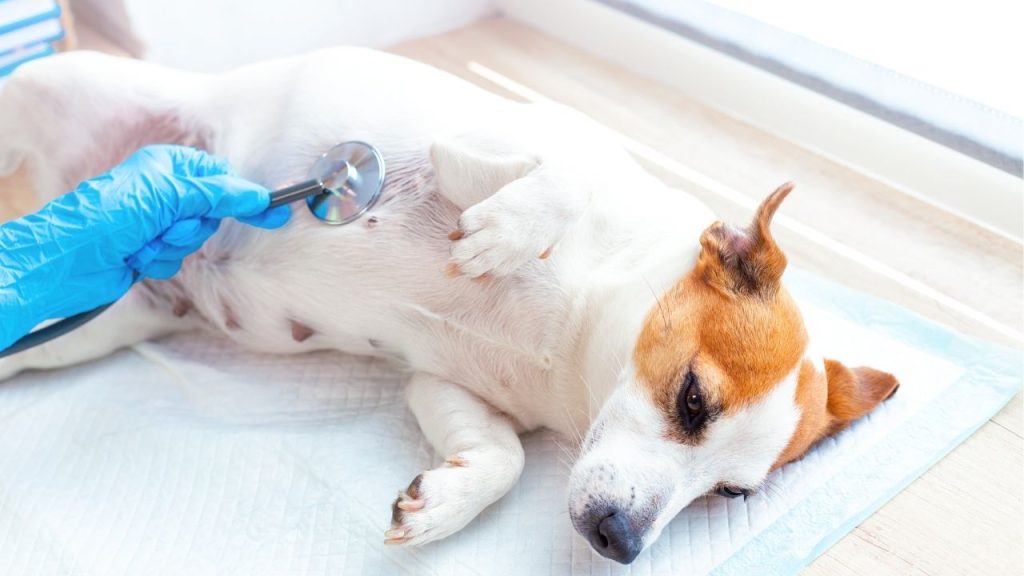The importance of sterilization and castration programs in pet adoption: Resources and information for guardians

Understanding the Role of Sterilization and Castration in Pet Adoption
In the landscape of pet adoption, understanding the value of sterilization and castration programs is crucial for guardians. These programs not only contribute to the welfare of animals but also play a significant role in controlling pet overpopulation. By choosing to sterilize or castrate pets, guardians can positively impact their communities and the lives of countless animals.
Adopting a pet is a rewarding experience that brings immense joy. However, it also comes with responsibilities, one of which is ensuring the health and well-being of your new companion. Sterilization and castration represent proactive steps towards achieving this goal. Consider these important points about sterilization and castration:
- Health Benefits: Sterilization can prevent certain types of cancers, including mammary tumors in female pets and testicular cancer in males. Additionally, these procedures reduce the risk of various reproductive diseases, such as pyometra in females, which can be life-threatening if not treated. According to the American Veterinary Medical Association, sterilized pets often enjoy a healthier and longer life.
- Behavioral Improvements: Altering pets can lead to significant behavioral changes that enhance the human-animal bond. Pets that have been sterilized or castrated are less prone to aggressive behaviors, territorial disputes, and roaming tendencies. This means that altered pets are more likely to stay at home and engage positively with their guardians and other pets, creating a harmonious living environment.
- Overpopulation Control: One of the most evident benefits of sterilization is its role in managing the number of unwanted animals. In the United States, millions of animals enter shelters every year, with only a fraction finding loving homes. According to the ASPCA, approximately 6.3 million animals – both cats and dogs – are taken into shelters annually. By participating in sterilization programs, guardians help to reduce shelter overcrowding, thus alleviating the strain on resources and reducing euthanasia rates.
Despite the significance of these procedures, many potential guardians may not fully understand their implications. Common misconceptions include beliefs that sterilization alters a pet’s personality or that they are not necessary for indoor pets. Such misunderstandings can prevent responsible pet ownership. Educational resources abound, from veterinary services to local animal welfare organizations, offering guidance to prospective pet guardians on making informed decisions regarding their pets’ health and well-being.
As you explore the world of pet adoption, recognizing the importance of sterilization and castration will enhance your understanding of responsible pet guardianship. Not only do these choices foster healthier pets, but they also contribute positively to the broader community and environment. Join us in uncovering the benefits and resources available to ensure a better future for adopted pets and their families. Embrace the opportunity to be a part of the solution in championing animal welfare through responsible choices, starting with sterilization and castration.
DISCOVER MORE: Click here for local pet adoption resources

The Multifaceted Benefits of Sterilization and Castration
When it comes to pet adoption, the discussion surrounding sterilization and castration is not just about population control; it encompasses a wider array of advantages that can greatly enhance the lives of adopted pets and their guardians. Understanding these multifaceted benefits is essential for anyone considering bringing a new animal companion into their home.
Firstly, many guardians may be surprised to learn that sterilization and castration also play a vital role in improving pet behavior. Unaltered pets can often exhibit erratic behaviors, ranging from aggressiveness to consistent marking of territory. After the procedures, these behaviors tend to decrease significantly. When a pet is less focused on mating, their attention can shift more towards companionship and interaction with their guardians, resulting in a more harmonious home environment.
Moreover, it is noteworthy to mention the economic advantages associated with sterilization and castration. While the initial cost of the procedure may seem daunting, it is important to consider the long-term financial implications. Unaltered pets may incur additional vet bills due to reproductive health issues or injuries sustained while roaming. By investing in these procedures, guardians are not only ensuring their pet’s health but also potentially avoiding unexpected expenses associated with caring for litters or unplanned medical issues. With many local shelters and clinics offering low-cost options, the financial burden can often be alleviated.
To emphasize the importance of community responsibility, let’s discuss the broader implications of sterilization and castration in terms of public health and safety. Communities inundated with stray animals face challenges such as property damage, increased disease transmission, and even higher rates of traffic accidents involving pets. By actively participating in sterilization programs, guardians contribute to the decline of stray populations, resulting in safer neighborhoods for both humans and animals alike.
Importantly, awareness campaigns and educational resources are available to help prospective pet owners navigate these decisions. Here are a few resources guardians can tap into:
- Local Animal Shelters: Many shelters offer educational materials and can connect you with low-cost sterilization and castration programs in your area.
- Veterinary Hospitals: Consult with veterinarians who can provide insight into the best options for your pet’s specific needs and address any misconceptions about the procedures.
- Online Platforms: Websites such as the ASPCA and the Humane Society provide valuable information regarding the benefits and availability of sterilization programs.
These resources not only offer guidance but also help foster a culture of responsible pet ownership. By collectively understanding the importance of sterilization and castration, guardians can make informed choices, contributing to a healthier community and better lives for their animals.
| Category | Details |
|---|---|
| Cost-Effective | Sterilization and castration programs reduce the number of unwanted animals, leading to fewer costs associated with shelter care and veterinary services. |
| Health Benefits | These procedures can prevent serious health issues, such as certain cancers and pyometra, significantly improving the lifespan and quality of life for pets. |
| Community Impact | Fewer stray animals contribute to safer neighborhoods, allowing families to enjoy their communities without the risks associated with overpopulation. |
| Behavioral Improvements | Pets that are sterilized or castrated often exhibit fewer behavioral issues, including aggression or territory-marking, making adoption a more appealing choice for new guardians. |
The benefits of sterilization and castration extend beyond immediate financial savings or health improvements. These programs play a crucial role in creating a balanced ecosystem in pet populations. Community-wide initiatives can significantly decrease animal abandonment rates, leading to less straining of local animal shelters and rescue groups. For guardians seeking a lasting connection with their pets, understanding the significance of these programs is essential, as they contribute not only to pet welfare but also to societal kindness towards animals. For those considering adoption, exploring local resources for sterilization and castration can positively impact their future companion’s longevity and happiness.
DISCOVER MORE: Click here to learn about your pet’s nutrition
Addressing Myths and Misinformation About Sterilization and Castration
Despite the undeniable benefits of sterilization and castration, a myriad of myths and misinformation often clouds the conversation around these procedures. Addressing these concerns is essential for prospective pet guardians to make informed decisions and dispel any fears associated with sterilization.
One prevalent myth is that spaying or neutering will lead to significant weight gain in pets. While it is true that altered pets may have different nutritional needs and may require adjustments in their diet, responsible guardians can manage a pet’s weight with proper feeding practices and regular exercise. The reality is that sterilization does not inherently cause obesity; instead, it provides a chance to focus on balanced nutrition and an active lifestyle.
Another common misconception is the belief that sterilized pets become less protective or less capable of being good companions. In fact, studies indicate that the opposite can be true. Neutering in males often leads to a decrease in aggressive behaviors and territoriality, allowing them to engage more positively in social interactions. Guardians can experience a more affectionate and sociable pet post-procedure.
Furthermore, there is a fear among some about potential health risks related to sterilization. While any surgical procedure carries inherent risks, the advantages far outweigh the potential downsides. In females, spaying significantly reduces the risk of uterine infections and breast tumors, which can be fatal. In males, neutering helps prevent testicular cancer and lowers the chances of prostate issues. Thus, the long-term health benefits greatly enhance the quality of life for pets.
The Role of Education in Promoting Responsible Pet Ownership
Educational initiatives focusing on the importance of sterilization and castration are essential components in shaping community perspectives and fostering responsible pet ownership. By raising awareness of the realities surrounding these procedures, we can encourage more guardians to participate in sterilization programs.
Various non-profit organizations, such as the American Society for the Prevention of Cruelty to Animals (ASPCA) and local humane societies, are constantly working to provide informative workshops, free seminars, and outreach programs aimed at educating the public. These resources not only inform prospective pet owners about the benefits of sterilization but also help dismantle prevalent myths.
Additionally, many local governments are partnering with animal welfare organizations to promote community sterilization events. These programs often provide low-cost or even free sterilization services, making it economically feasible for guardians to comply with responsible pet ownership practices. For example, the California-based organization, Fix Our Ferals, provides free spay and neuter services to caretakers of feral cat colonies, a significant initiative that positively impacts community animal welfare.
Support Systems for New Guardians
As new guardians embark on the journey of pet ownership, having a network of support is crucial. Many communities feature pet owner groups or online forums where individuals can share their experiences and seek advice regarding sterilization and castration. These platforms encourage discussions, dispel fears, and promote community bonding around responsible pet care.
Moreover, resources such as pamphlets and online videos created by veterinarians can enlighten new guardians on what to expect before and after their pets undergo sterilization. These materials can prove invaluable in reassuring constituents about the process and the long-term advantages for their pets’ health and behavior.
Ultimately, a focus on education and community support helps ensure that the message of responsible pet ownership is spread widely, creating a more informed guardianship that aligns with the principles of pet welfare. This shared knowledge will play a pivotal role in fostering healthier, happier lives for both pets and their guardians alike.
DISCOVER MORE: Click here to find local animal shelters and adoption organizations
Conclusion: Embracing Responsible Pet Ownership Through Sterilization
The significance of sterilization and castration programs in the realm of pet adoption cannot be overstated. By engaging in these procedures, guardians contribute not only to the health and well-being of their pets but also to broader community efforts aimed at curbing the overpopulation of animals. The compelling benefits of sterilization—ranging from reducing the risk of certain health issues to mitigating behavioral problems—highlight the necessity for pet owners to embrace these practices as an integral part of responsible guardianship.
Moreover, combating myths and misinformation about sterilization is crucial. As we have discussed, addressing fears surrounding weight gain, companionship quality, and health risks can empower new pet owners to make informed decisions. An educated community is a powerful ally in promoting the welfare of animals, and initiatives led by organizations like the ASPCA play a vital role in disseminating accurate information about the advantages of these procedures.
It is imperative for community members to actively participate in local sterilization programs, particularly those that offer affordable options. By taking advantage of educational resources and support networks, prospective guardians can navigate the complexities of pet ownership with confidence and compassion.
In conclusion, as we advocate for the well-being of animals and the responsibilities that accompany pet ownership, we urge all current and future guardians to explore the invaluable resources available. Through informed choices regarding sterilization and castration, we can pave the way for a healthier population of pets while fostering stronger, supportive communities. Let us collectively embrace the essence of responsible pet guardianship, ensuring a brighter future for our cherished companions and the communities in which they thrive.



